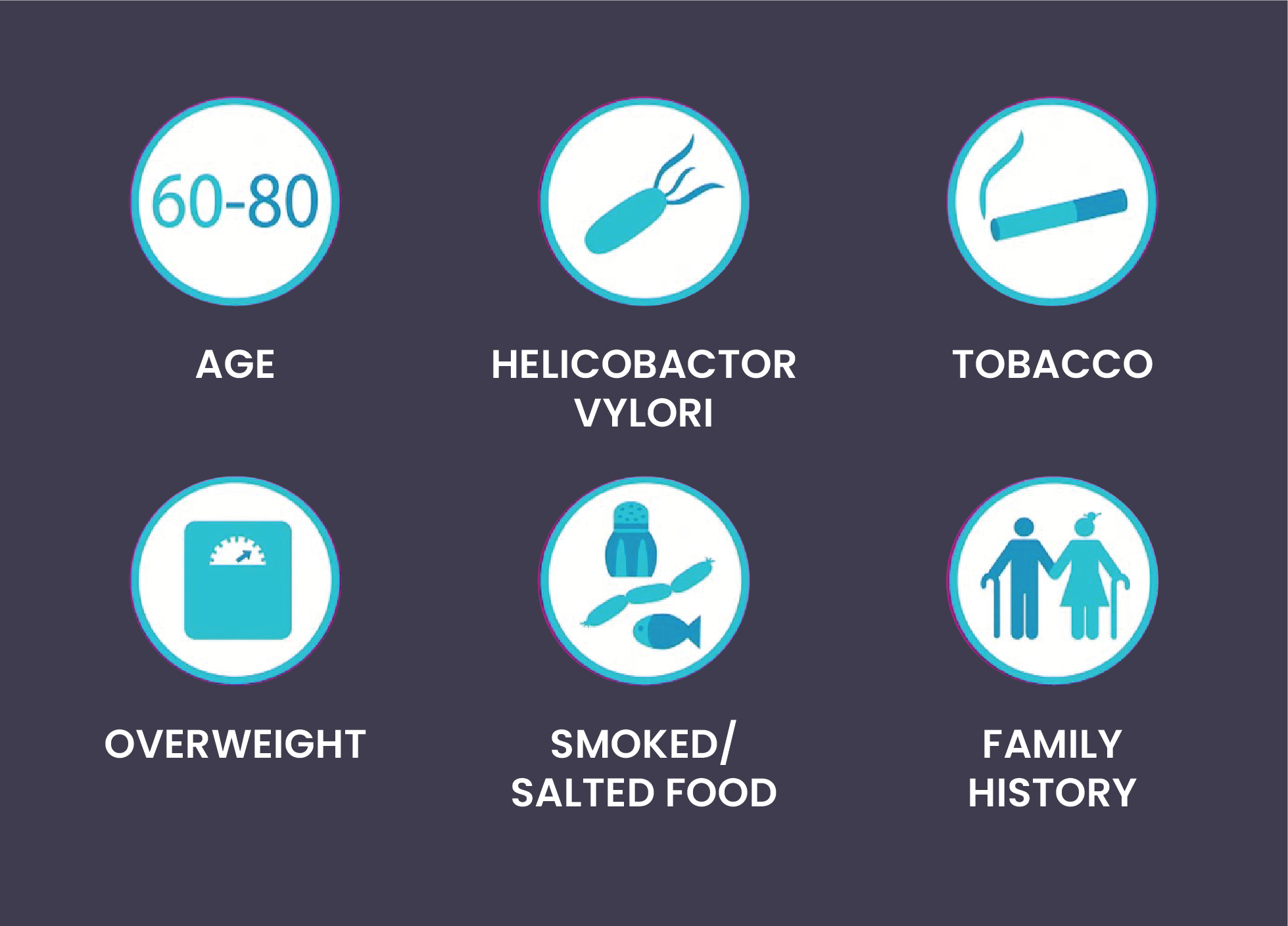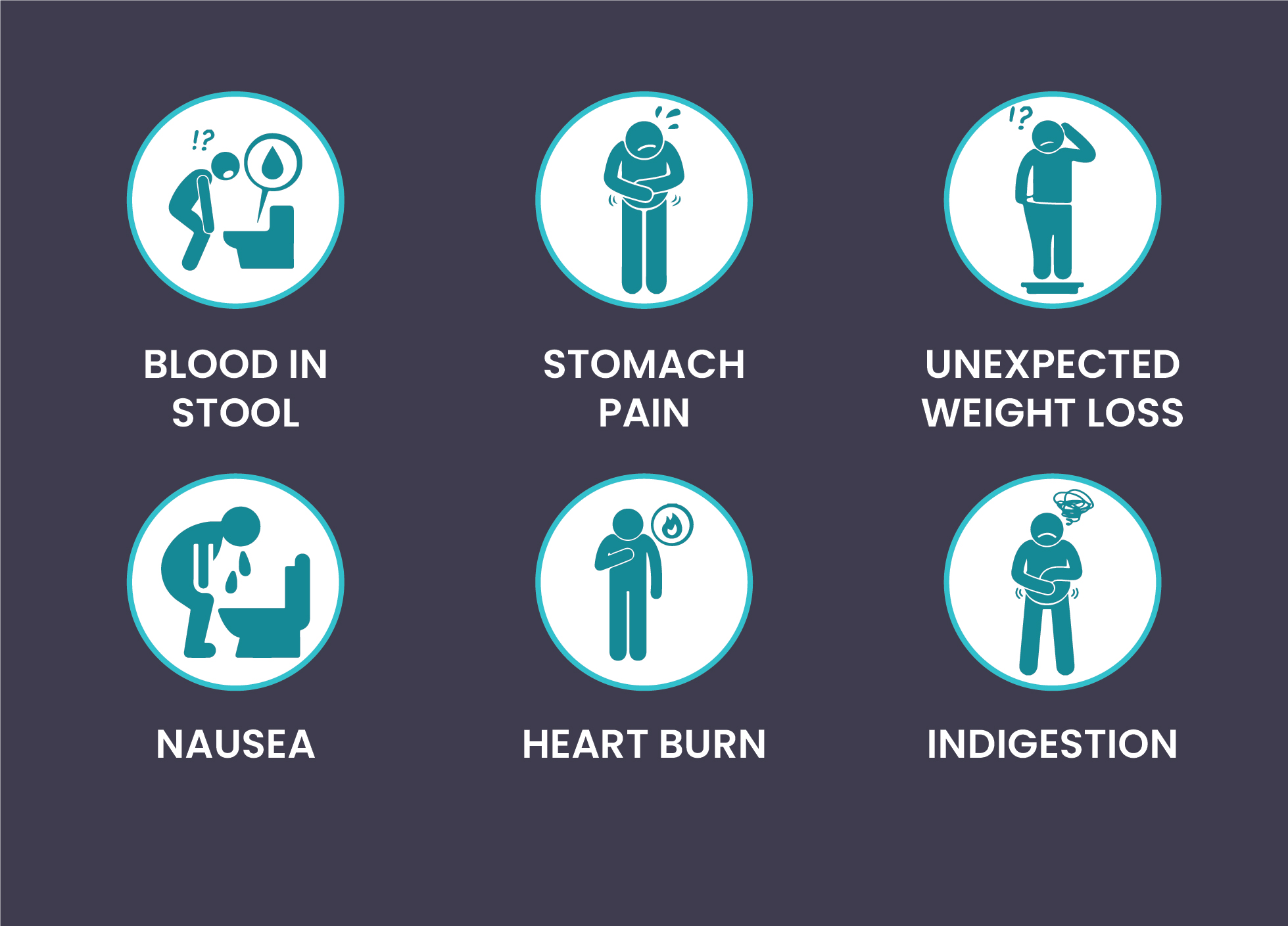Stomach Cancer
Introduction
In India, the incidence rate of stomach cancer is very low compared to that in western countries, and the number of new gastric cancer cases is approximately 34,000, with a male predominance (male-to-female ratio, 2:1). It is estimated that by the year 2020, approximately 50,000 new gastric cancer cases will be reported annually in India.
Stomach cancer is an abnormal growth of cells that begins in the abdomen. Stomach cancer, also known as gastric cancer, can affect any part of the stomach. Gastric cancer is more likely to affect the area where the long tube (the esophagus) that carries the food you swallow meets the stomach. This area is called the gastroesophageal junction. This type of cancer is difficult to diagnose because most people typically don’t show symptoms in the earlier stages. Stomach cancer is relatively rare compared to other types of cancer, the biggest danger of this disease is the difficulty of diagnosing it.

Types of stomach cancer:
Most cancers of the stomach (about 90% to 95%) are adenocarcinomas. These cancers develop from the gland cells in the innermost lining of the stomach (the mucosa).
There are 2 main types of stomach adenocarcinomas:
Causes and Risk Factors
The exact cause for stomach cancer is still unknown but few things that can raise the risk for the disease. One of the major risk factors is – H. pylori bacterial infections (a common stomach infection that can sometimes lead to ulcers).
Other things that play a role in raising the risk include:

Signs and Symptoms
Sometimes cancer can grow in the stomach for a long time before it causes symptoms. Signs and symptoms of stomach cancer may include:

Diagnosis
Cancer in the stomach is detected by an assessment from the doctor and undergoing tests or procedures that will guide doctors in stomach cancer diagnosis and staging. To make a diagnosis, your doctor will first perform an exam to test for any abnormalities. These tests consist of:
Management
The decision of treatment for patients with stomach cancer relies upon a few elements including their age, general condition of wellbeing, and their capacity to withstand the treatment. The level of cancer spread is another critical factor. The distinctive types of treatment that might be managed incorporate the accompanying:
Follow-Up
After treatment follow-up visits every 3 to 6 months for the first few years, then less often after that. These visits usually include a physical exam and review of any symptoms you're having.
